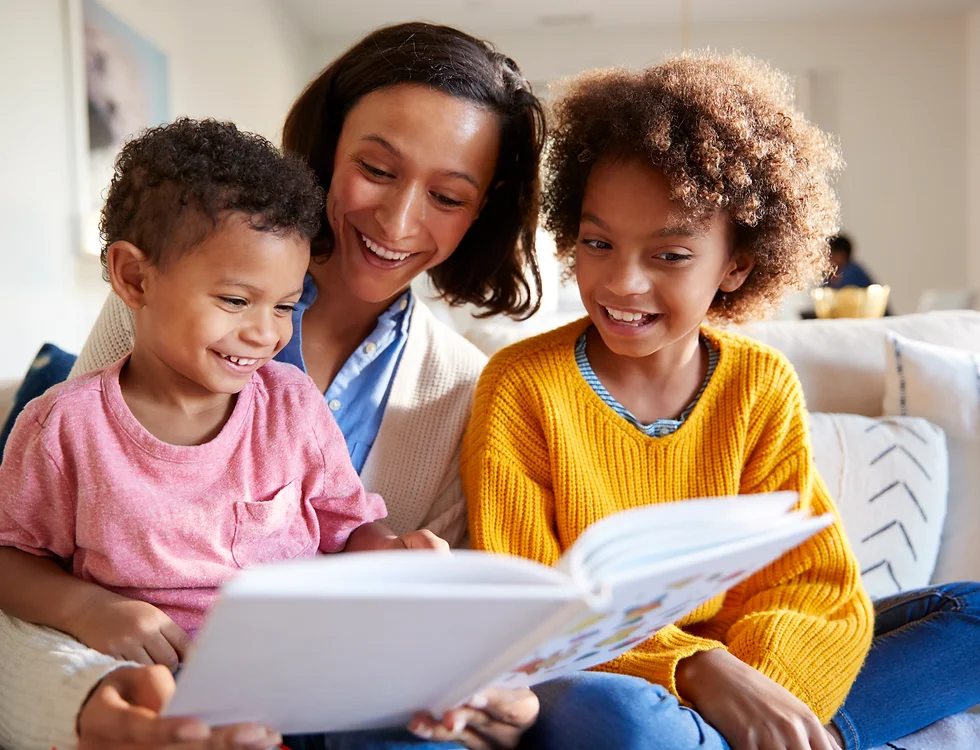
Vocabulary means knowing the meaning of words. Children must understand the meaning of a word to help them understand the world around them and the books they read.
Another goal is for children to build their vocabulary by learning as many new words as they can from life experiences, reading about new subjects and through conversations.
To watch videos with subtitles: Click the settings icon in the lower right-hand corner, next click “subtitles,” and then “English.”
To see subtitles in another language, after selecting English, click on subtitles again, then click “auto-translate” and select the language of your choice.
Reading aloud to your child and having your child read books on their own is the best way to increase their vocabulary. Books provide words they won’t encounter in everyday conversations as the language of books is more complete and formal than talking. A great story also provides context and illustrations for learning a new word.
Become aware of the language you use with your child. Often parents will simplify how they speak hoping it will help their child more easily understand what they mean. Instead, aim to use “rich vocabulary,” use interesting words and phrases and bold descriptive words. Give your child every advantage and be intentional by being more specific with the words you choose. Your effort will expand their world of knowledge!
Example:
Instead of, “Can you give me that?”
Try: “Could you hand me the plaid dish towel? The one with fringe on the end.”
When reading aloud to a child there will be words that your child does not understand. Children usually don’t tell us because they are unaware of what they do not know. After reading a page, make sure to ask your child if they understood a word that appeared tricky or challenging. Explain what the word means in a “kid-friendly” way, in words they understand, and look for clues in the pictures that will help your child understand.
Example:
“Do you know what terrified means? Look at the boy’s face – he’s very scared! Terrified means to be very afraid. Can you say ‘terrified’? Have you ever been terrified of something?”
When you are pointing out new words to your child, make sure they tell you how they understand the meaning of that word. Can they connect this new word to something they have experienced?
“Can you tell me what the word ‘vivid’ means from the story? Have you ever seen something that was ‘vivid’?”
Ask your child questions about what they’re interested in, their toys, their favorite characters, their favorite books; make eye contact and listen closely as they speak. Take turns when talking with them. As parents, we sometimes can get in the habit of giving instructions but not engaging in conversations with our kids. Having meaningful discussions at home helps children develop their vocabulary by allowing them to incorporate the new words they have learned into their conversations.
Vocabulary words are usually gathered from different subjects like science and math or stories they’ve read in school. If the teacher sends a note home about the themes for the week, use those words in your everyday conversation. If students are learning about solids, liquids and gasses in science, ask your child to tell you what those words mean. Describe how you’ve used those words.
Example:
“When I take this leftover frozen soup out of the freezer it’s as hard as a rock – it’s solid. Then I warm it up on the stove and it becomes liquid again. If I boil it too long, the liquid begins to evaporate into the air as steam. That’s a gas! You can see it steaming up from the pot and fogging up the window.”
A child needs to hear a new word about 10 times before they begin to use it in their own vocabulary. Take advantage of opportunities to use the new words they’re learning in your conversations with them.